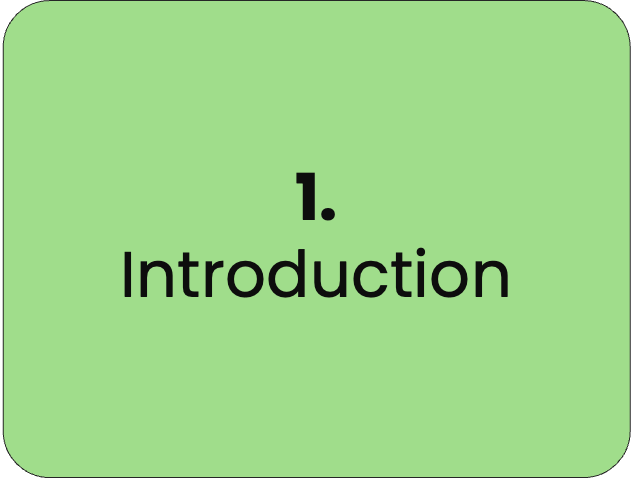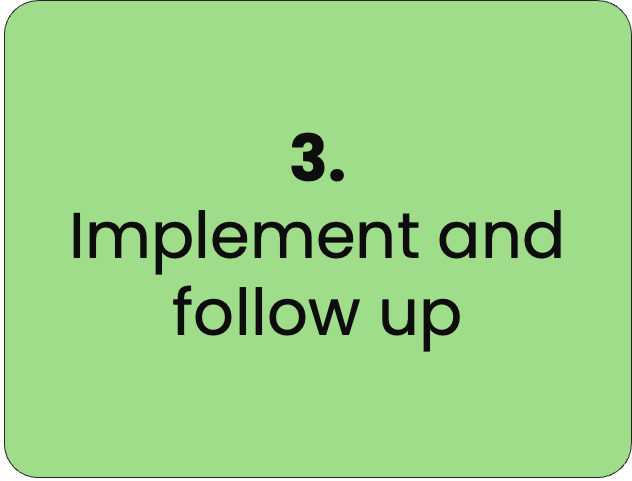Pricing strategies: how to optimise your pricing for maximum profitability and competitiveness
Share this article
Learn the most effective pricing strategies to maximise profitability and competitiveness. Discover cost-based, value-based, premium and psychological pricing - and how to implement them in your business strategy.
Pricing is one of the most crucial factors for a company's success, but there is no universal pricing model that fits all businesses. Choosing the right pricing strategy requires a thoughtful calculation based on market demand, competitor analysis and customer behaviour.
To facilitate this process, we have compiled a comprehensive list of around 100 different pricing strategies, divided into six categories. Here you will find everything from traditional costing-based pricing models to more advanced dynamic pricing, where prices are adjusted in real time depending on factors such as demand, season and customer segment.
Each pricing strategy is briefly described to help you identify the most profitable and sustainable approach for your business. Whether you run an e-commerce platform, a SaaS service or a physical store, it is crucial to understand how different pricing models can affect your competitiveness and profitability.
By choosing a strategy that combines costing accuracy with flexible dynamic pricing, you can optimise your pricing and maximise both revenue and customer value.
1. Cost-based pricing strategies
-
Cost-plus pricing – Add a predetermined profit margin to the cost of production.
-
Target return pricing - Set price to achieve a certain level of profit.
-
Break-even pricing – Set the price so that revenue covers costs at a given volume.
-
Full cost pricing - Includes both direct and indirect costs for an overall picture.
-
Direct cost pricing – Based on direct costs only, often used for seasonal offers.
-
Target Costing - The price is determined based on what the market is willing to pay, and costs are adjusted accordingly.
-
Marginal cost pricing – Set based on the cost of producing an additional unit.
-
Bid Pricing – Cost-based strategy for tenders and procurements.
-
Low cost strategy - Keep prices low through efficiency and volume sales.
-
High cost strategy – Set higher to signal premium quality.
-
Economies of scale pricing - Lower costs at higher volumes enable lower prices.
-
Cost effective differentiation – Combines low-cost manufacturing with unique product benefits.
-
Budget pricing – Tailored for affordable products with minimal margins.
-
Minimum risk calculation – Sets the lowest possible price to cover costs.
-
Module pricing – Price based on add-on modules of a product or service.
-
Service cost pricing - Calculates the price based on the cost of service delivery.
-
Cost-based subscription pricing – Monthly or annual fees that cover costs and create profitability.
-
Loss leader pricing - Some products are sold below cost to drive sales of other products.
-
Excess capacity pricing – Adds price premium when capacity is limited.
-
Life cycle cost pricing - Price that reflects the cost over the product's entire life.
-
Starter pricing – Low initial price to attract early adopters, increases over time.
-
Reverse pricing - The customer proposes a price, and the company accepts or refuses.
-
Time-based cost pricing – Price based on production time or length of service delivery.
-
Residual cost pricing - Takes into account the residual value of a product when pricing.
-
Hybrid cost pricing - Combines different cost models to optimize profitability.
2. Value-based pricing strategies
-
Value-based pricing - The price is based on the customer's perceived value.
-
Customer segmented pricing - Adjusts prices for different customer groups depending on their willingness to pay.
-
Premium value pricing – Higher price based on an exclusive experience.
-
ROI-based pricing - Pricing is based on the customer's expected return on investment.
-
Dynamic value pricing - Adjusts prices depending on demand and market conditions.
-
Package pricing - Several products or services are combined at one price to maximize the customer's perceived value.
-
Personal pricing - Price is individually adjusted according to the customer's purchase history or behavior.
-
Functionality-based pricing - The customer only pays for the functions they use.
-
Crowd Pricing - The price is determined by polls or group purchases.
-
Experience-based pricing - The customer pays for an experience rather than a product.
-
Value-added pricing - The price includes extra services or guarantees.
-
Prestige pricing – High price to signal status and quality.
-
Time-dependent value pricing - Higher price when demand is higher and lower when demand is low.
-
Seasonal value pricing - Prices vary depending on the time of year.
-
Relationship-based pricing - Long-term customers get a better price.
-
Pay-What-You-Want - The customer decides the price himself.
-
Invitation pricing - Only certain customers get access to products at specific prices.
-
Symbolic pricing - A price is set to communicate a specific company valuation.
-
Psychological value pricing - Creates value through pricing psychology.
-
Niche pricing – Focuses on unique products with specific value for a target group.
-
Environmentally based pricing - The price includes sustainability aspects.
-
Shared risk pricing - Price is based on successful customer results.
-
Exclusivity pricing – Price based on limited supply and demand.
-
Free-plus-price model - Basic product is free, while premium features cost.
-
Charity based pricing - The price includes a donation to charity.
3. Premium pricing strategies
-
Prestige pricing - High price to signal luxury and status.
-
Price skimming – High initial price that is gradually reduced over time.
-
Luxury pricing - Extremely high prices on exclusive products.
-
Consistent premium pricing - Maintains high prices regardless of market changes.
-
Snob effect pricing - High price to attract customers seeking exclusivity.
-
Emotional premium pricing – Pricing based on emotional connection to the brand.
-
Limited Edition Pricing - High prices for products with limited availability.
-
Collector effect pricing - Premium prices on products that collectors value highly.
-
High-touch service pricing - High prices combined with exclusive customer service.
-
Status-based pricing - High prices aimed at customers seeking social prestige.
-
Premium packaging strategy – Exclusive packaging that justifies the higher price.
-
Technological premium pricing - High price for advanced technology and innovation.
-
Bespoke pricing - Customized products and services at high prices.
-
Brand-driven pricing - High prices based on strong brand.
-
Club and membership pricing – Premium pricing for exclusive memberships.
-
Premium experience pricing - High prices for unique customer experiences.
-
Trophy Pricing - High prices for products that have symbolic value.
-
Marketing driven premium pricing - Price based on strong advertising and brand exposure.
-
Industry leading premium pricing - Pricing where the company is the market leader.
-
Gourmet pricing - High prices on exclusive food and drinks.
-
Craft pricing - Premium price on products with unique craftsmanship.
-
Retro pricing - High prices on relaunched classic products.
-
Organic premium pricing - High price for sustainable and environmentally friendly products.
-
VIP pricing - Exclusive prices for loyal premium customers.
-
Symbolic pricing - High prices that reflect the company's exclusivity and status.
4. Competitive pricing strategies
-
Market-based pricing - Price is set based on competitors' levels.
-
Price leadership - The company dictates the market price through its position.
-
Price followership - The company adapts to the industry leader's prices.
-
Undercutting - Lower prices than competitors to gain market share.
-
Overpricing – Higher prices to signal better quality than competitors.
-
Price comparison strategy - Direct comparison of prices in marketing to attract customers.
-
War pricing - Temporary sharp price reduction to knock out competitors.
-
Geographic competitive pricing - Adjusts prices depending on geographic markets.
-
Reactive pricing – Adjusts price in response to competitor moves.
-
Substitute pricing - Sets price based on alternative products on the market.
-
Tender pricing - Pricing adapted to win procurements and tenders.
-
Aggressive discounting - Heavy discounts to win customers from competitors.
-
Differentiation pricing – Higher price to position itself as a premium variant of competitors.
-
Adjusted competitive pricing - Dynamic price depending on competitors' changes.
-
Hybrid competitive pricing – Combines competitive and cost-based strategies.
-
Seasonal competitive pricing - Prices change depending on the season and competitive situation.
-
Niche competitive pricing – High or low price depending on the market segment.
-
Matching strategy - The company always matches the competitor's lowest price.
-
Cost-driven competitive pricing - Sets prices based on own costs but with competition in mind.
-
Price guarantee strategy - Promise to have the lowest price on the market to attract customers.
-
Differentiated discounting – Specific discounts to attract customers from competitors.
-
Volume-based competitive pricing - Lower price for large volume purchases to compete better.
-
Premium competitive pricing - Higher price with stronger marketing than competitors.
-
Micro competitive pricing – Adjustment of prices in smaller, specific market segments.
-
Collaborative pricing - Cooperation between companies to influence market prices.
5. Dynamic pricing strategies
-
Surge Pricing - Prices are adjusted in real time depending on demand.
-
Yield Management – Optimization of price based on demand forecasts and capacity.
-
Fluctuating prices - Price varies dynamically depending on market conditions.
-
Limited time discount – Temporary price reductions to create urgency in customers.
-
Seasonal pricing - Price changes depending on season and demand.
-
Dynamic competitive pricing - Adjusts prices depending on competitors' changes.
-
Demand driven pricing - Price is raised when demand increases and lowered when demand is low.
-
Promotional pricing – Temporary offers and discounts to drive sales.
-
Loyalty-based pricing - Custom pricing for repeat customers.
-
Flexible pricing - Price can be adjusted according to market conditions or individual customer needs.
-
Dynamic package pricing - Products are packaged differently depending on customer segment and season.
-
Volume-based dynamic pricing - Price changes depending on the quantity purchased.
-
AI-based pricing – Machine learning analyzes data to automatically adjust prices.
-
Event-based pricing - Price is set higher at popular events or peak demand.
-
Geo-located pricing - Prices vary depending on the customer's location.
-
Time-dependent differentiated pricing - Different prices at different times of the day or week.
-
Flash Sales - Extremely short-term campaigns with big discounts.
-
Real-time pricing – Prices are continuously updated based on market conditions.
-
Usage-based pricing - The customer pays based on how much the product is used.
-
Payment delayed pricing - Option to pay a reduced price now and the rest later.
-
Personalized dynamic pricing - Prices are adjusted individually based on the customer's purchase history.
-
Exchange-related pricing – Prices change based on commodity prices or financial indicators.
-
Shipping-based pricing - Faster delivery can mean a higher price.
-
Reverse auction pricing - The customer gets the opportunity to bid on a product or service.
-
Freemium pricing – Basic version is free, while premium features have dynamic pricing.
6. Psychological pricing strategies
-
Charm Pricing - Prices end in 9 or 99 to appear more attractive.
-
Reference price strategy – Compare the price with a higher original price to create value.
-
Crossed prices - Shows the old price to highlight the discount.
-
Odd even prices - Odd prices (e.g. SEK 49 instead of SEK 50) are perceived as lower.
-
Price anchoring - Customers are affected by first displayed price levels.
-
Decoy Pricing - Offers a less attractive intermediate product to steer customers to a more expensive alternative.
-
Contrast pricing - Presents different price ranges to steer the customer towards a specific level.
-
Loss aversion pricing - Highlights what the customer loses if they don't buy.
-
Purchase pain theory - Small payments feel less painful than large one-off purchases.
-
Prestige pricing - High price gives the impression of high quality.
-
Rounded prices for premium products – Used on exclusive products to appear more elegant.
-
Bundling effect - Several products are sold together to increase the perceived value.
-
Partitioned Pricing - Separate charges (e.g. shipping) can make the price appear lower.
-
The zero price effect - Free offers are perceived as extremely valuable.
-
Psychological price thresholds – Keep the price just below a larger number (eg 199 instead of 200).
-
Color effects in pricing - Red text is often used to signal discounts and lower prices.
-
Exclusivity pricing - Limited access increases perceived value.
-
Limited time offers - Customers are driven by fear of missing out on a deal.
-
Payment plans - Split payments make products feel more affordable.
-
Free trial periods - Customers get used to the product and are more likely to buy.
-
Emotional pricing - Emotional arguments are used to justify the price.
-
Group-based pricing - Discounts for groups create social pressure to buy.
-
Visual pricing - The size of the price can affect how expensive it is perceived.
-
Rounding effect - Prices that are rounded off (e.g. SEK 100 instead of SEK 99.99) are often used for luxury products.
-
Package pricing with freedom of choice - The customer can customize the package, which increases the propensity to buy.
Share this article
Did you like this article? Here is more...
Latest



